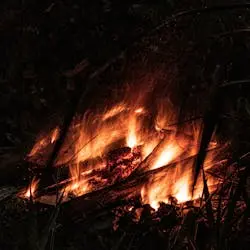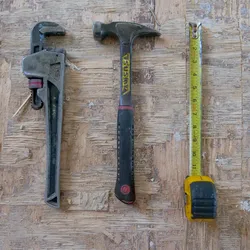
Level 1:
A clean fireplace works better. It’s safe too. Follow these steps to clean your wood burning fireplace. First, be armed with gloves, brushes, and a vacuum cleaner. Next, remove the ashes. Don’t leave any behind. Then brush the fireplace. This removes soot. Use a vacuum cleaner to clean up. Next, check the chimney. Make sure it’s clean. Remember, always clean when the fireplace is cold.
Level 2:
A well-maintained fireplace is not only more efficient, but it’s also safer. Here’s how to clean a wood burning fireplace properly. First off, protect yourself with thick gloves and nose masks. First and foremost, clean out the ashes. Thoroughly sweep off all the ashes and be sure not to miss any. Then, gently brush the interior of the fireplace to remove the soot. Get a strong vacuum cleaner to clean up the loose ash and soot. Never neglect the chimney. Hire a professional for chimney sweeping if necessary. Importantly, always ensure the fireplace is cold before cleaning.
Full Story:
Wood-burning fireplaces bestow a charm of their own, exuding warmth and a cozy ambiance. But like any other household element, fireplaces require regular care. Proper cleaning not only ensures that your fireplace functions optimally but also promotes safety in your home. Here’s a step-by-step guide on how to clean a wood-burning fireplace.
Get your ducks in a row and be prepared with the necessary supplies. Safety comes first; so, put on thick long gloves and nose masks to protect yourself from ash and soot. An apron or an old set of clothes should also be worn to keep yourself clean.
With your personal protection set, dive right in. First, remove the ashes. Use a metal shovel and bucket to scoop out the ashes thoroughly—keeping your movements slow will minimize ash dust. Be cautious about leaving any behind. Excess ashes can hasten the deterioration of your fireplace’s lower components, like the fire grate.
Following the ash removal is the nitty-gritty job of soot and creosote removal. These substances, when accumulated, can reduce your fireplace’s efficiency and even pose a fire hazard. Gently scrub the interior walls and floor of the fireplace with a wire brush. This knocks off the soot and creosote that clings to the surface.
Up next is the vacuuming process. Use a shop vacuum, ideally one with a HEPA filter, to clean up the remaining loose ash and soot. This will leave your fireplace looking neat and clean.
No stone left unturned, don’t overlook the chimney! It accumulates soot, creosote, and debris, which can obstruct the smoke’s escape route and create a potential fire hazard. For this task, hiring a professional chimney sweep is advisable. They have the right tools and training to effectively clean your chimney without causing any damage.
Lastly, ensure that cleaning is done when the fireplace is cold, as handling hot coals can be dangerous and could result in burns.
Carefully follow these steps, and you can enjoy your wood-burning fireplace to the fullest, knowing it’s clean, safe, and efficient.
FAQs:
Question: How often should I clean my wood-burning fireplace?
Answer: It varies depending on use, but as a rule of thumb, clean your fireplace at least once a week during the winter when it’s used most.
Question: Why is it important to clean out ashes in the fireplace?
Answer: Excess ashes can hasten the deterioration of your fireplace’s lower components, like the fire grate. It also can affect the efficiency of the fire.
Question: How do I clean the soot and creosote from my fireplace?
Answer: Use a wire brush to gently scrub the interior walls and floor of the fireplace. This knocks off the soot and creosote that clings to the surface.
Question: Why is it vital to clean the chimney of a wood-burning fireplace?
Answer: The chimney accumulates soot, creosote, and debris, which can obstruct the smoke’s escape route and create a potential fire hazard. Cleaning ensures the chimney is safe and functions properly.
Question: Is it safe to clean a hot fireplace?
Answer: No, always ensure the fireplace is completely cold before beginning your cleaning process. Handling hot coals can be dangerous and could result in burns.
Fill in the Blanks:
be armed with, first off, first and foremost, get your ducks in a row, dive right in, nitty-gritty, no stone left unturned
Before beginning, ______ thick gloves and a nose mask to protect yourself from ash and soot.
_______, you should thoroughly clean out the ashes from your fireplace.
Once you have all the necessary cleaning supplies and are properly protected, you can ______ and start the cleaning process.
After removing the ashes, the next step is dealing with the ______ of soot and creosote removal.
Lastly, leave ______ by ensuring the chimney is also thoroughly cleaned.
Difficult Words:
Be armed with - (phrase) to be prepared with something.
First off - (phrase) used to introduce the first in a list of items or points.
First and foremost - (phrase) most importantly; above all.
Get your ducks in a row - (phrase) organize your tasks and plan properly before embarking on a project.
Dive right in - (phrase) to start doing something immediately, especially with enthusiasm.
Nitty-gritty - (noun) the practical details of a matter.
No stone left unturned - (phrase) to do everything possible to find something or to solve a problem.




